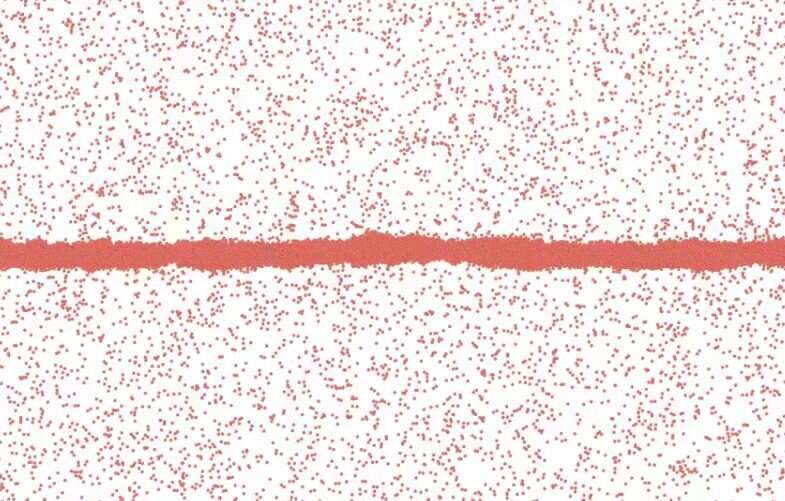Nano drops explode 19th century theory

Droplets emanating from a molecular "nano-tap" would behave very differently from those from a household tap 1 million times larger—researchers at the University of Warwick have found. This is potentially crucial step for a number of emerging nano technologies, e.g., manufacture of nano-sized drug particles, lab-on-chip devices for in situ diagnostics, and 3-D printers capable of nanoscale resolution.
Molecular simulations of liquid jets, akin to a stream of water pouring out of a nano-tap, have been used by researchers at the University of Warwick to probe the nanoscale production of droplets. The reduction in scale from the household jet is equivalent to that of Big Ben being shrunk to the size of a human hair!
The breakup of jets has a classical theory, devised by Rayleigh and Plateau in the 19th century, but this was found to be inadequate at the nanoscale, where one cannot ignore the inherent jostling of molecules that produces nano-waves on the liquid's boundary. The new theory developed captures these nano-waves and can accurately predict the production of nanodroplets.
This theory predicts that droplets are easier to produce at the nanoscale than from the household tap, with nano-waves acting to breakup jets that would be classically stable.
Prof. Duncan Lockerby from the School of Engineering at the University of Warwick comments:
"Our research is concerned with developing new understanding for emerging nanoscale technologies, using simulation for design techniques, and this research exemplifies this effort with potential applications in manufacturing and healthcare."
Dr. James Sprittles from the Mathematics Institute at the University of Warwick comments:
"It has been wonderful to work on a problem whose classical solution I teach to 3rd year undergraduates and to develop a new updated theory for application at the nanoscale"
The paper 'Revisiting the Rayleigh-Plateau Instability for the Nanoscale' has been published Open Access as a Rapid Communication in the prestigious Journal of Fluid Mechanics. It has also featured on the Front Cover of Volume 861 and is currently 4th Most Read Article.
More information: Chengxi Zhao et al, Revisiting the Rayleigh–Plateau instability for the nanoscale, Journal of Fluid Mechanics (2019). DOI: 10.1017/jfm.2018.950
Journal information: Journal of Fluid Mechanics
Provided by University of Warwick



















